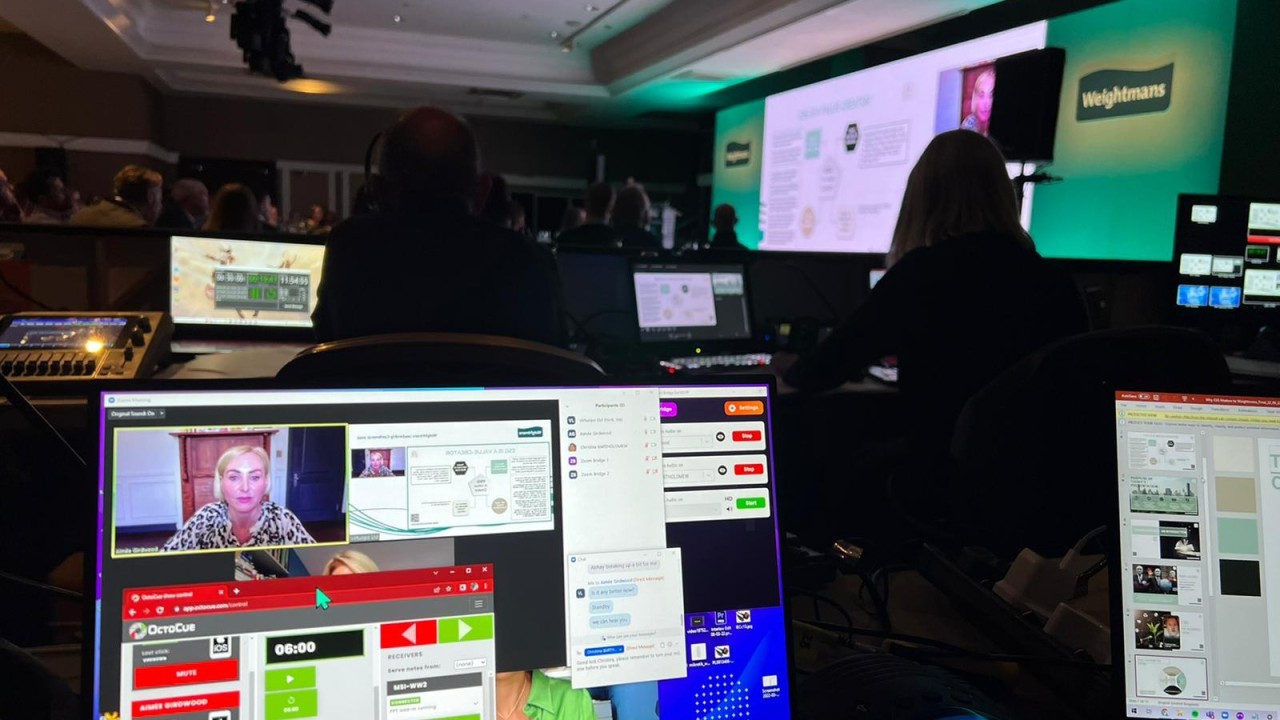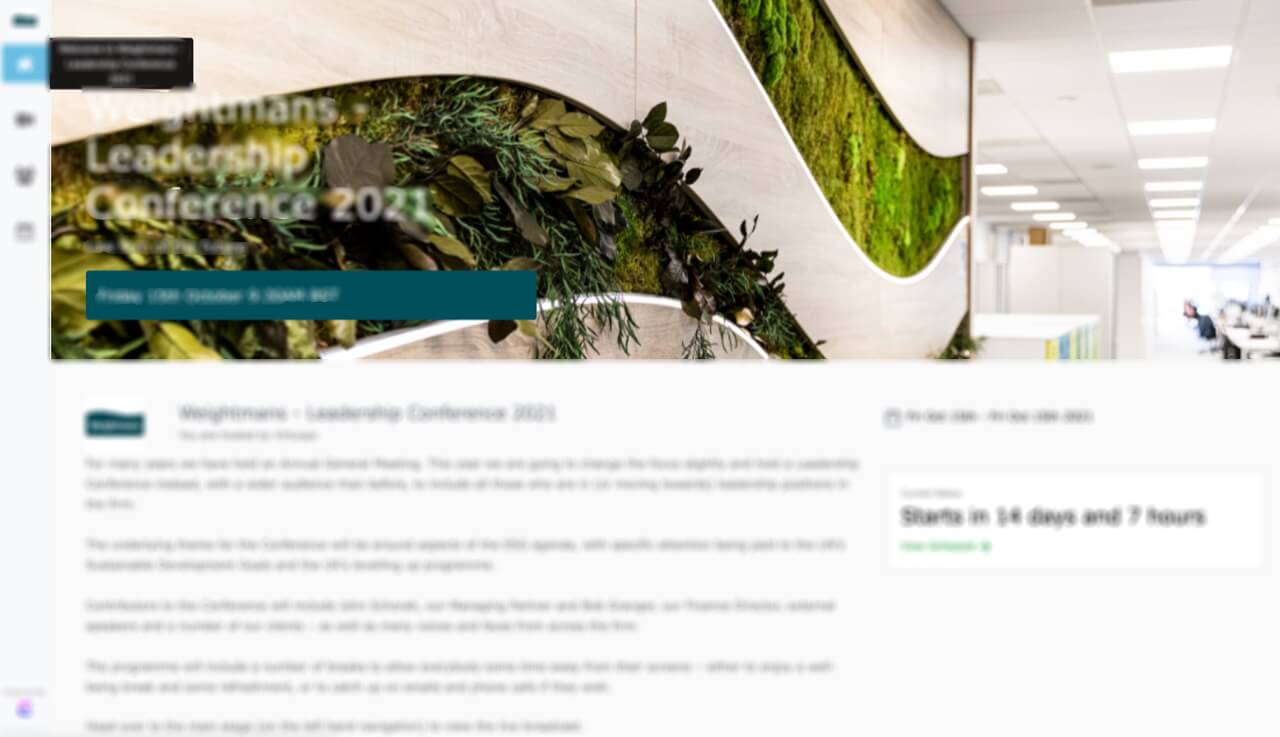The hybrid event model is becoming increasingly popular as we continue to seek greater flexibility around how we attend corporate events, whilst businesses are also continuously looking for ways to lower their carbon footprint.
Combining all the benefits of in-person events with the convenience of participating from anywhere in the world, the hybrid format is shaping up to be a real winner in the future of corporate events. However, one of the biggest challenges of organising a successful hybrid event is balancing the needs of in-person and virtual attendees.
Here’s our expert’s guide to planning a hybrid event, which includes tried and tested tips on how to create a seamless experience for both audiences.
Pre-Event Preparation
· Set your Event Objectives– start by outlining your goals and defining your target audience. This is also the time to identify which metrics you plan to use to measure the success of your event such as attendance figures, audience engagement or feedback from participants.
· Select the Right Platform– there are many event platforms available, but we always recommend choosing one with robust features and engagement tools such as Q&As, polls and chat options. It’s also important to make sure you opt for a platform that is compatible with in-person AV equipment.
· Build a Tech-Savvy Team – it’s a good idea to establish separate teams for virtual and on-site operations. Factoring in time to conduct tech rehearsals is also vital for a seamless execution.
Content Creation
· Ensure Content is Inclusive – design sessions and activities to be accessible to both audiences. Consider using visuals, captions and concise messaging for clarity.
· Incorporate Pre-Recorded Content – pre-recorded keynotes or tutorials can be a great way to maintain production quality and build in flexibility.
· Interactive Elements – plan polls, quizzes and breakout sessions to keep both types of audiences engaged. Bridge the in-person and virtual divide using real-time feedback tools.
Event Promotion
· Tailor Messaging – create targeted campaigns for in-person attendees, as well as those participating virtually, and highlight the unique values of each format.
· Promotion – consider sharing teaser videos, behind-the-scenes content and live countdowns to help build excitement in advance.
Hybrid Event Design
· Synchronise Experiences – remember to address the remote audience frequently during your hybrid event and make sure presenters know which camera to use when speaking to them. It’s also vital to incorporate joint activities such as live Q&A sessions with unified moderators. If your hybrid event is aimed at a global audience, remember to align schedules for participation across different time zones.
· Enhance Networking – encourage remote audiences to interact with those attending in-person using chat rooms or hybrid breakout sessions.
· Optimise On-Site Setup – position on-site cameras to capture dynamic angles to help give remote attendees a sense of the live energy and atmosphere inside the physical venue. Use large screens to display comments and questions from those attending remotely. Consider bringing groups of colleagues together for watch parties in different offices and involve them wherever possible.
Post-Event Engagement
Attendee Feedback – use analytics tools to evaluate audience engagement and encourage both audiences to complete surveys to provide insights into their experiences.
Share On-Demand Content – make recorded sessions available to watch on demand afterwards. This enables attendees to recap on key content, whilst also extending the reach of your event by giving those who were unable to attend the live session an opportunity to watch at a more convenient time. Consider repurposing event content into video highlights, blog posts or social media snippets.
Best Practices
We always recommend thorough testing of all technology before every hybrid event. It’s also a good idea to assign a dedicated support team for real-time troubleshooting.
Regular check-ins with both audiences are essential for helping all participants to feel connected, whilst consistency in branding and tone across all touchpoints establishes professionalism, leading to a high-end experience. By effectively blending physical and digital experiences, hybrid events can deliver unparalleled value to diverse audiences, resulting in greater sustainability, as well as financial and time savings.
Case Study – Delivering a High-End Hybrid Event Experience for a Leading Global Food Services and Facilities Management Company
The Challenge: To deliver a hybrid event for Sodexo, linking up more than 150 remote attendees with co-presenters across two locations (London and Salford).
Results: The hybrid event saw a 98% attendance rate and content was available to watch on demand afterwards. Opting for a hybrid model with mobile interactivity, rather than an in-person event, meant both audiences were able to enjoy the same event with the flexibility to attend from anywhere. By choosing a hybrid event, the client saved £60,000 on hotels and travel, offsetting nine tonnes of C02.





